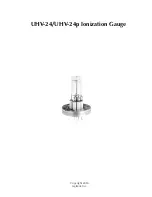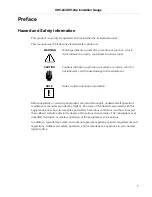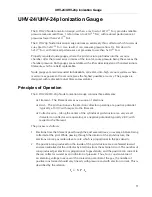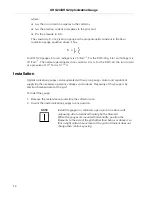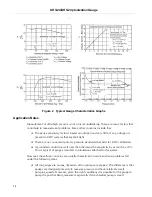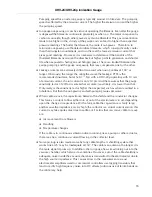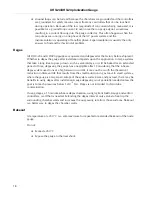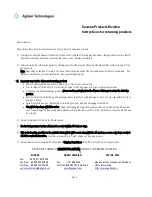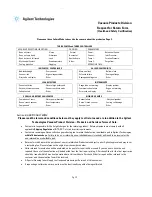
UHV-24/UHV-24p Ionization Gauge
DRAFT
15
Pumping speed for a nude ion gauge is typically around 0.5 litres/sec. The pumping
speed is affected by the emission current. The higher the emission current the higher
the pumping speed.
❑
Ion gauge out-gassing occurs by virtue of operating the filament. Even after the gauge
is
degassed
the filaments continue to generate gas when on. The major component is
carbon-monoxide, though other gasses may also be liberated. This gas concentration
tends to be higher in the vicinity of the gauge and can lead to higher than expected
pressure readings. The hotter the filament, the more it out-gasses. Therefore, to
minimize out-gassing use thoriated-iridium filaments, which run significantly cooler
than their tungsten counterparts, and run them at the lowest emission current that
gives good readings. However, it is necessary to determine if the benefits of the
thoriated filaments overcome the drawback of higher particle generation and shorter
life when exposed to hydrogen and halogen gases. There is a tradeoff between the
gauge pumping and the gauge out-gassing that may compensate one for the other.
❑
Leakage currents are extremely difficult to avoid when using cables of 100 ’ or
longer. Obviously, the longer the cable the worse the leakage. PTFE is the
recommended insulator, but at 5x10
-11
Torr with a UHV-24p operating with 10 mA
of emission current, the ion current is only 10 pA. And that assumes that the gauge
sensitivity factor of 20/Torr is somewhat accurate; most likely, it is lower than that.
Only rarely is the sensitivity factor higher than expected, such as when mounted in a
tubulation. But then the out-gassing and self-pumping issues get worse.
❑
When cables move, the capacitance between the shield and the conductor changes.
This forces a current to flow either into or out of the electrometer circuit, depending
upon the change in capacitance. With a long cable the capacitance is fairly large,
and because the impedance is very high (the collector is a virtual current source) this
current may take quite some time to settle out. Factors that can cause cable to move
are:
❑
Air movement from blowers
❑
Handling
❑
Temperature changes
If the cable is in continuous vibration due to running near a pump or other actuator,
there may be a continuous current flowing in the collector lead.
❑
Noise pick-up is also made worse by long cable lengths. A shielding system that
works fine at 25’ may be inadequate at 150’. The cable is an antenna, the longer it is
the more signal it picks up. In addition, the ion gauge has wires sticking out into the
vacuum chamber, which also act as antennas. However, even if the cable shielding is
adequate, noise inside the vacuum chamber is transmitted to the electrometer due to
the high source impedance. This causes errors in the measurement as most
electrometer amplifiers used in commercial controllers use logging transistors that
tend to rectify high frequency noise into DC offsets. Judicious use of ferrite beads on
the cable may help.
Содержание UHV-24
Страница 2: ...D R A F T 1 6 1 4 Copyright 2014 Agilent Inc UHV 24 UHV 24p Ionization Gauge...
Страница 4: ...UHV 24 UHV 24p Ionization Gauge This page intentionally left blank D R A F T 1 6 1 4...
Страница 6: ...UHV 24 UHV 24p Ionization Gauge This page intentionally left blank D R A F T...
Страница 10: ...UHV 24 UHV 24p Ionization Gauge This page intentionally left blank...
Страница 20: ...UHV 24 UHV 24p Ionization Gauge 20 D R A F T Table 2 Gas Correction Factor Table...
Страница 21: ...UHV 24 UHV 24p Ionization Gauge D R A F T 21 Table B 0 Gas Correction Factor Table Continued...
Страница 22: ...UHV 24 UHV 24p Ionization Gauge This page intentionally left blank D R A F T...
Страница 26: ...UHV 24 UHV 24p Ionization Gauge This page intentionally left blank...
Страница 27: ......


